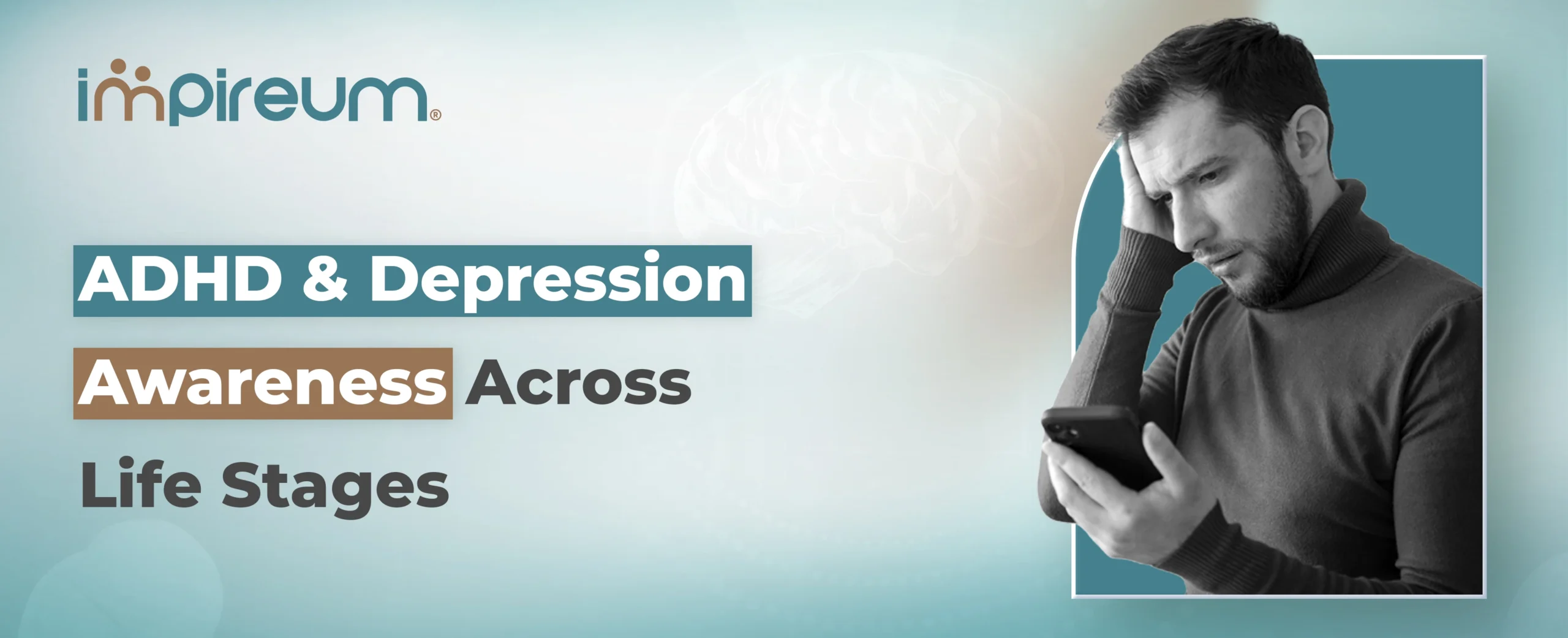October is a time to recognize the progress we’ve made in creating awareness, understanding, and treating Attention-Deficit/Hyperactivity Disorder (ADHD) and Major Depressive Disorder. These prevalent mental health issues, which can impact people across all stages of life, are now better understood than ever before. As we continue to explore their prevalence, how they manifest at different ages, and the latest treatment advancements, we can look to the future with hope and optimism.
October is a time to recognize the progress we’ve made in creating awareness, understanding, and treating Attention-Deficit/Hyperactivity Disorder (ADHD) and Major Depressive Disorder. These prevalent mental health issues, which can impact people across all stages of life, are now better understood than ever before. As we continue to explore their prevalence, how they manifest at different ages, and the latest treatment advancements, we can look to the future with hope and optimism.
ADHD in children2 and teens often characterizes itself by hyperactivity, impulsivity, and difficulty maintaining attention. In school settings, children may struggle with academic performance, while teens can experience challenges with self-regulation, leading to difficulties in maintaining social relationships, emotional control, and decision-making.
As it stands, adult diagnoses are increasing as awareness grows, resulting in a substantial number of people first being diagnosed with ADHD later in life.
While ADHD in older adults typically goes under-diagnosed, some seniors may experience cognitive and memory challenges often attributed to other conditions, though they may actually be linked to undiagnosed ADHD. Currently, treatment in this age group is still emerging as a focus.
Did you know? According to the National Institute of Mental Health (NIMH), depression is a leading cause of disability worldwide and affects around 21 million adults, impacting roughly 8% of the U.S. population. In other words, depression has no face! As a highly concerning issue since the pandemic, depressive disorders can significantly impair daily life, making it essential to understand its impact on different age groups.
Depression in children and adolescents may present as irritability, sadness, and withdrawal from activities they once enjoyed. Teens, primarily, may engage in risky behaviors or experience significant mood swings. Bullying, academic pressures, and social isolation are common contributing factors in this age group.
In adults, depression often manifests as persistent feelings of hopelessness, lack of motivation, fatigue, and changes in sleep or appetite. In addition, depression can also manifest with manic symptoms in some adults. They’ll seem extremely happy and joyous at various times, out of character, or highly withdrawn and quiet. For many people, depression can significantly impact job performance and relationships, with women being twice as likely to experience depression as men.
Lastly, depression in senior populations is sometimes dismissed as part of aging, but it remains a serious concern. Social isolation, loss of loved ones, and declining health typically contribute to rising depression rates among the elderly3. Cognitive decline can also mask or exacerbate depressive symptoms, making treatment more complex.
We encourage you to use this month’s focus on ADHD and Depressive Disorder Awareness to empower yourself and others towards better mental well-being. If you suspect that you or a loved one may be dealing with ADHD or depression, remember that seeking help is a sign of strength. It’s never too late to seek treatment, and at Impireum, we’re here to support you. Connect with us online or call us at 346-361-0100 for immediate assistance!





